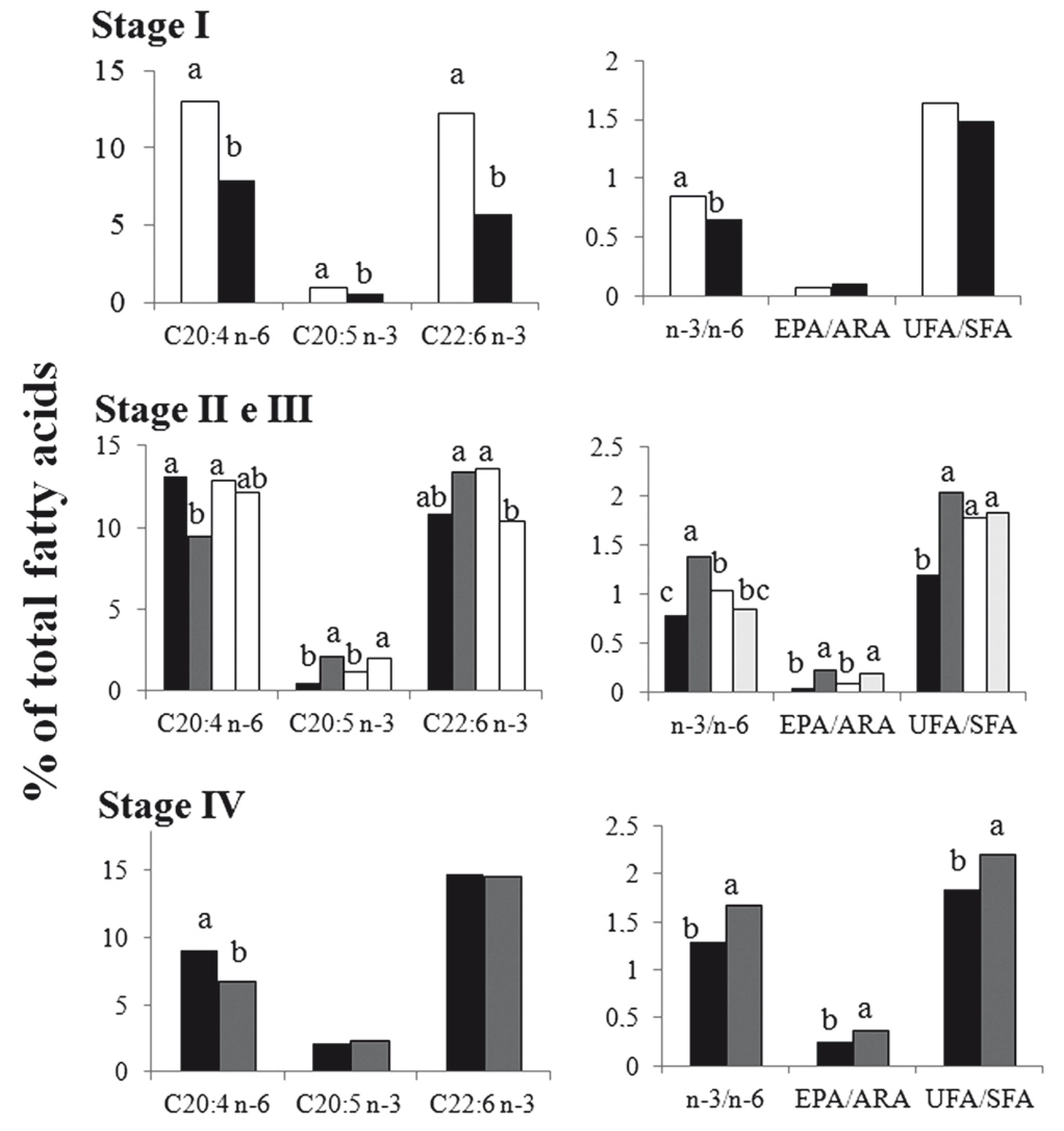Knowledge about gonad fatty acid composition is important for broodstock diet formulation. This study characterized ovary fatty acid composition of wild female jundiá catfish (Rhamdia quelen) in their different gonadal maturation stages. Female jundiá (n = 36, average weight= 383.8 + 208.8 g) were captured in the rio Uruguay, comprising all seasons. Ovaries were extracted and classified according to their gonadal maturation stage. Gonad-somatic ratio varied significantly among seasons, being higher in spring (3.7), followed by summer (2.2), winter (0.9) and autumn (0.6). Main fatty acids groups detected were: saturated (SFA= 35.5%), monounsaturated (MUFA= 28.1%) and polyunsaturated fatty acids (PUFA= 33.5%). Over the four seasons, palmitic acid was recorded in large quantities, followed by docosahexaenoic acid (DHA) and arachidonic acid (ARA). ARA was present in higher concentrations in immature or maturing ovaries, and its content decreased along the maturation process. Conversely, DHA and eicosapentaenoic acid (EPA) contents increased during maturation. Such variation resulted in an increase in EPA/ARA and DHA/ARA ratios in mature gonads, which can be important for successful breeding. Such findings suggest that jundiá broodstock diets should contain lipids that provide long chain polyunsaturated fatty acids from both the n-3 and n-6 series to ensure gonadal maturation completion.
Arachidonic acid; Broodstock diet; Docosahexaenoic acid; Eicosapentaenoic acid; Gonadal maturation



